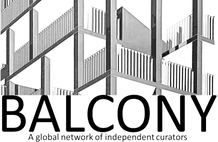Projects
Project #2:
Archives
 Archives – Balcony 2022-2023
Archives – Balcony 2022-2023
Drorit Gur Arie
Jacques Derrida stated that the question of archives is not a question of the past. It is a question of the future, a question of response, of promise and of a responsibility for tomorrow. The archive has become raw material and inspiration for many artists over the last few decades. Artists develop different levels of relationship with personal, familial and public archival material. They move in a flexible space of history and cut across the depths of time. They decompose archival materials, disrupt them, reference them and create new narratives from concrete or imaginary archives. The archival memory they control, mark and limit create a conversation in which the artist decides who will enter the gates of memory and who will not have access.
Stephen Farthing describes archives and the impulse of modern artists with respect to archives in the following way:
Artists approach archives from different directions. Most however are actively looking for the new and are seldom burdened by a detailed knowledge of what they are looking at. Feeling no need for footnotes or proof of truth, they are free to make whatever they wish of the stuff before them. Like gift shops, archives sit mid way between the past and the future, as places where the present is of little importance and the future attaches itself directly to the past. As such they are perfect stalking grounds for those artists still looking for new frontiers. [1]
Farthing speaks of the intermediate place of the archive, half way between the past and the future, as a place where the presence has a minimal meaning while the future connects directly to the past. However, this description should be taken in a limited way since there is another artistic framework that connects with the past in order to account for the present. An example of this can be found in Walid Raad’s body of work and his long-running Atlas Group project.
Mark Godfrey2 highlights the artist as a historian who does not give into the dictations of history. He or she can thus work in a way free from methodologies. In this spirit, we are asking for a short text, presenting an artist’s project that refers to the following questions: does the artist constructs a new archive? What is its characteristics? Who is it intended for? What is his or her relation to the historical and the contemporary? How do they connect events and objects to memories?
1Stephen Farthing, “Archives: The Raw & The Cooked” (UAL online publications, 2009) retrieved from: http://www.artdes.monash.edu.au/aca/stephen-farthing.pdf
2Mark, Godfrey, The Artist as Historian”, October 120 (2007): pp.140-172
Project #1:
Transmission / Disruptive Communication
Click for list of participating artists
The past year has seen a break in the regular flow of everyday life and was accompanied by experiences of isolation, termination, social distancing and activity carried out mostly in the virtual realm. This shift led to different responses among artists. Some saw it as an opportunity for conscious inner reflection into a quiet and slow incubator; while others saw the outside as a threatening noise, a paralyzing wave and act of disruption and interference in the order of the universe. This period that many deem “strange” and unusual, raises reflections on the future of art and culture, creativity and audiences, and demands a reexamination of the role of cultural institutions and museums, of accessibility of artistic materials, and of preserving the experience of observation and the observer.
Questions as to internal space, the external and political, the global, local, economic, social and humane are at the center of an experimental project initiated by the “Balcony” international network of curators, which seeks to evoke curatorial thought and artistic response in a way that bypasses the conventional dialog about COVID-19 and its implications.
This exhibition proposes to present an interpretation, code, theme and dictionary with respect to transmission and disruptive communications and linguistics or, to the contrary, a model of linkages and ways of communicating. The exhibition presents fluctuating relations between sound and pictures, sound and images, and types of noise and their visual representation. It highlights aspects of distortion and bisection of speech and language, exclusion of language from artistic vocal or linguistic creation in the spirit of Dadaistic manifest of Tristin Tzara (1918), this time however, in wake of the contemporary, global “war” that is claiming victims and leading to the collapse of order and to feelings of helplessness.
The exhibition encompasses an assortment of thoughts and positions outside of the political and ideological systems that are represented through language. They react to a range of voices and images, and to memory, order and its expropriation.
The exhibition was created by artists and curators from around the world for the urban space, while providing an experience of the street and its commotion. After scanning a QR code that is present on each work of art, a piece of sound or video art will be presented. The exhibition is simultaneously shown on windows of art and cultural institutions in a number of prominent cities around the world throughout 2020-2021.
Drorit Gur-Arie – Chief Curator of BALCONY
To date the project has been shown in the following locations:
APT Gallery (London)
Au QuinzE Artist Laboratory (Paris)
The Fourth Wall Gallery (Berlin)
Ladislav Sutnar Faculty of Design & Art at the University of West Bohemia (Plzeň)
Kulturhuset (Kungsängen/Stockholm)
Gallery of the Kibbutzim College (Tel Aviv)

